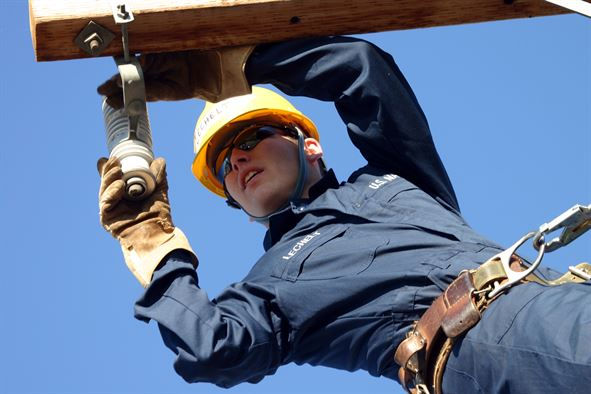Safe Practices for Personal Fall-Arrest Systems
Below are important safe practices while using personal fall-arrest systems:
Harness Saves The Day
- Don't tie knots in rope lanyards and lifelines; knots can reduce strength by 50 percent.
- Don't tie lifelines or lanyards directly to I-beams; the cutting action of beam edges can reduce the rope's strength by 70 percent.
- Know how the sag angle of a horizontal lifeline can affect arrest forces on the anchorages. Remember that horizontal lifelines must be designed, installed, and used under the supervision of a qualified person.
- Think about the potential for a swing fall whenever you connect a lifeline to a personal fall-arrest system.
- Remember that a shock-absorbing lanyard will elongate before arresting a fall. The fall distance includes:
- lanyard length (before the shock absorber extends),
- deceleration distance (shock-absorber extension),
- worker height, and
- a safety margin (allow 3 feet).
Body Belts
Body belts have a strap with means both for securing about the waist and for attaching to other components such as a lanyard used with positioning systems, travel restraint systems, or ladder safety systems.
OSHA standards which address fall hazards call for the use of body harnesses rather than body belts when used as part of a personal fall arrest system. They should be used for positioning only.
Knowledge Check Choose the best answer for the question.
5-11. What is the result if you tie knots in rope lanyards and lifelines?
You forgot to answer the question!

